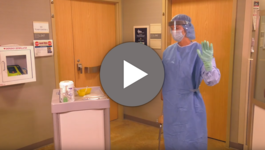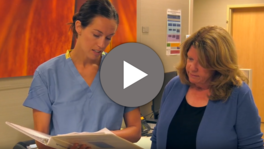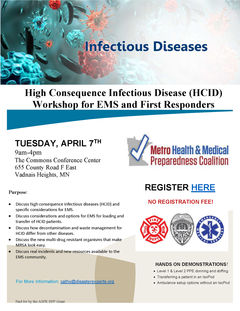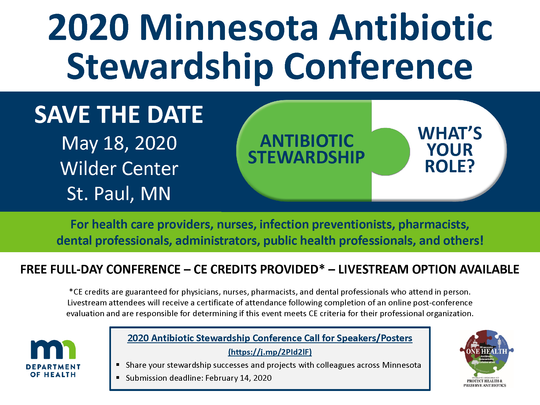|
The supply of personal protective equipment (PPE) in the United States provides sufficient product to meet the market demand, but has limited ability to rapidly increase production during public health emergencies. The Centers for Disease Control and Prevention (CDC) and Assistant Secretary for Preparedness and Response (ASPR) continue to monitor the COVID-19 situation. The Minnesota Department of Health (MDH) does not have a direct role in addressing health care supply chain challenges. MDH does not maintain caches of PPE or pharmaceuticals for distribution, or have the authority to influence supply chain manufacturers or distribution patterns.
The MDH Office of Emergency Preparedness and Response has supported the development and sustainment of eight Health Care Coalitions (HCCs) across the state for 17 years. Through the HCCs, MDH can monitor status and provide situational awareness to federal partners.
Minnesota's Health Care Coalitions: What Do They Do?
- Promote situational awareness
- Facilitate resource sharing/coordination
- Facilitate information sharing
- Facilitate coordination of incident response actions among member organizations
- Promote efficient interface of member organizations with jurisdictional authorities
- Support the request and receipt of assistance from local, state, and federal authorities.
If you experience supply chain challenges related to COVID-19 preparedness, please contact your regional Health Care Coalition. MDH will collate information and inform federal partners, such as CDC and ASPR, about those challenges. For more information, please visit Regional Health Care Preparedness Coordinators (RHPCs).
Suggestions for Conservation of Current PPE Stock
- Work with your supply chain personnel. Perform inventory to determine your current supply level.
- Assure staff use the N95s appropriately. Staff should adhere to the policy on when to wear them.
- Dispense as needed. Have enough available for staff to use when required, but do not put all the supply out.
- Do not put N95s on the patients.
- Take measures to secure current stock so they are not pilfered.
- Refer to the CDC links below to determine a course for your individual facility.
CDC Resources
MDH Resources
MDH has partnered with APIC Minnesota and the Minnesota Health Care Coalitions to provide ready-to-use tools for frontline facilities to prepare and respond to patients who potentially have a high consequence infectious disease (HCID). The MDH High Consequence Infectious Disease (HCID) Toolbox for Frontline Health Care Facilities website now offers two new training videos.
Check these and other videos out at Donning and Doffing Video Vignettes!
 |
|
Donning and Doffing PPE: HCID Level One Full Barrier Isolation
This video demonstrates how to don and doff personal protective equipment (PPE) for HCID Level One Full Barrier Isolation.
|
 |
|
Screening for High Consequence Infectious Disease (HCID)
This video guides health care professionals through the process of identifying, isolating, and informing key partners about a patient who presents with a possible high consequence infectious disease.
|
|
The Metro Health & Medical Preparedness Coalition is offering a free HCID workshop for EMS and first responders:
Tuesday, April 7, 2020
9:00 a.m. - 4:00 p.m.
The Commons Conference Center
655 County Road F East
Vadnais Heights, MN
Register Now: EMS HCID Workshop
Click the workshop flyer for more information!
Hands On Demonstrations:
Level 1 & Level 2 PPE donning and doffing
Transferring a patient in an IsoPod
Ambulance setup options without an IsoPod
|
|
 |
Purpose:
- Discuss high consequence infectious diseases (HCID) and specific considerations for EMS.
- Discuss considerations and options for EMS for loading and transfer of HCID patients.
- Discuss how decontamination and waste management for HCID differ from other diseases.
- Discuss the new multi-drug resistant organisms that make MRSA look easy.
- Discuss real incidents and new resources available to the EMS community.
The Minnesota Department of Health Injection Safety Program has been a partner with CDC's One & Only Campaign for several years conducting outreach and raising awareness of safe injection practices. There is still work to be done.
In February 2020, Melissa Schaefer MD et al. published a review of patient notifications resulting from unsafe injection practices by health care personnel in the United States in a Mayo Clinic Proceedings study. From 2012 through 2018, more than 66,748 patients were notified as part of 38 patient notification events. These new data brings the total number of U.S. patients notified about potential exposure to hepatitis B or C virus or HIV because of syringe reuse or mishandling of injectable medications since 2001 to nearly 200,000.
Injection safety is every health care provider's responsibility. One needle, one syringe, only one time! Share this article and join the injection safety listserv to stay up-to-date about the One & Only Campaign updates and CDC's efforts to reduce outbreaks associated with unsafe injection practices.
 When: May 18, 2020
What: Free full-day conference focused on antibiotic stewardship
Who: For health care providers, nurses, infection preventionists, pharmacists, dental professionals, administrators, public health professionals, and others!
Where: Wilder Center, 451 Lexington Avenue North, Saint Paul, MN 55104
Save the Date: 2020 Minnesota Antibiotic Stewardship Conference (PDF)
|